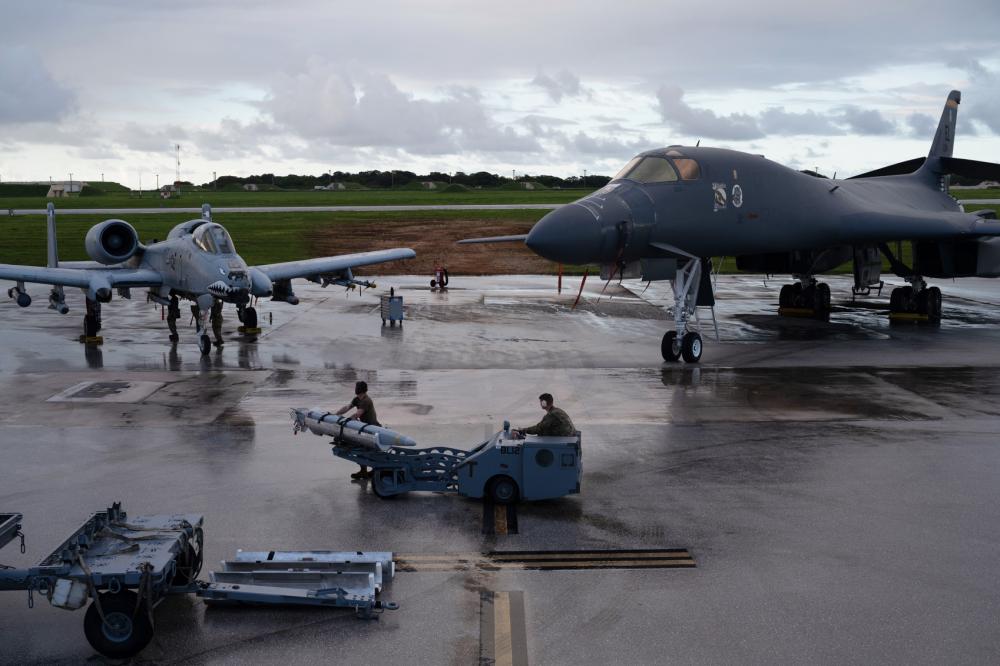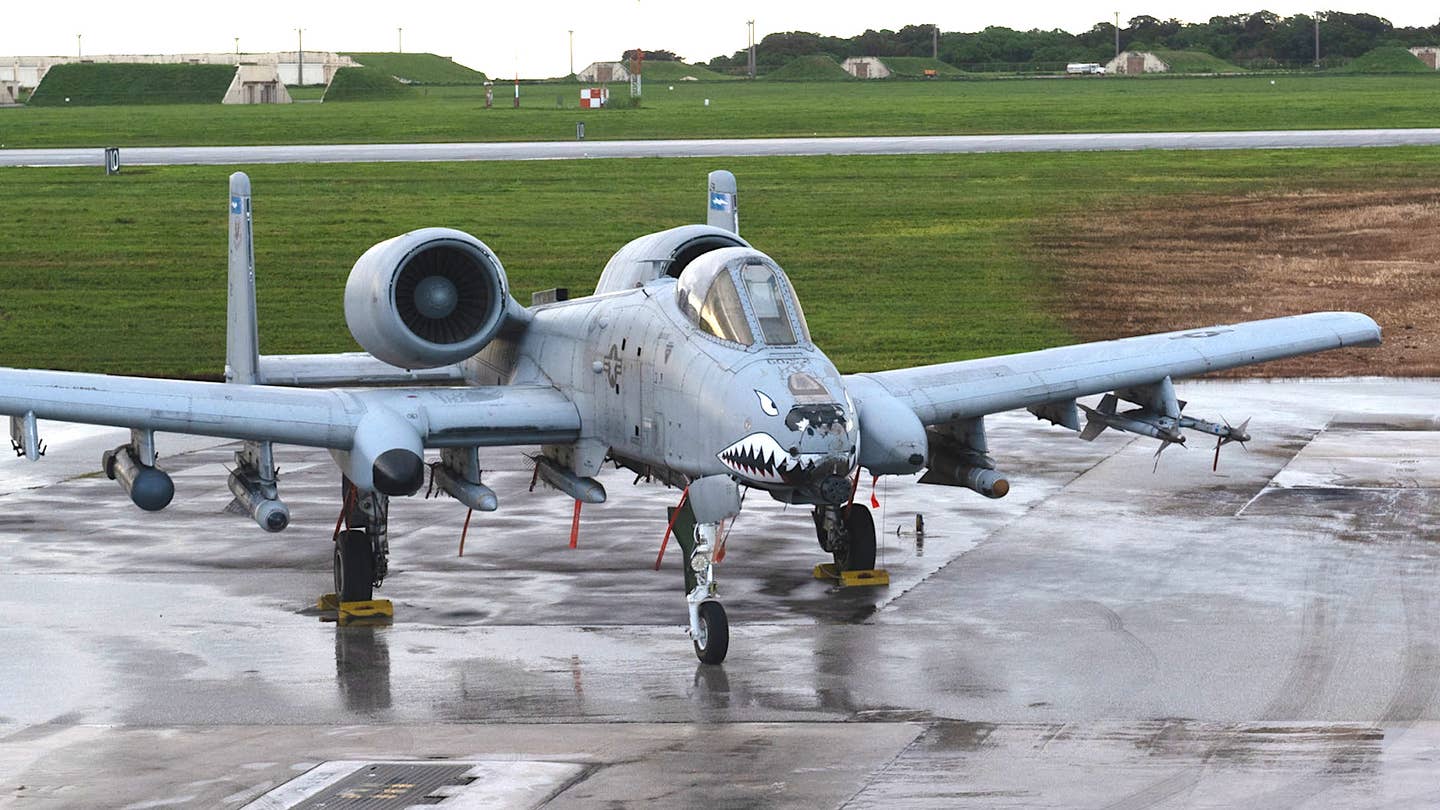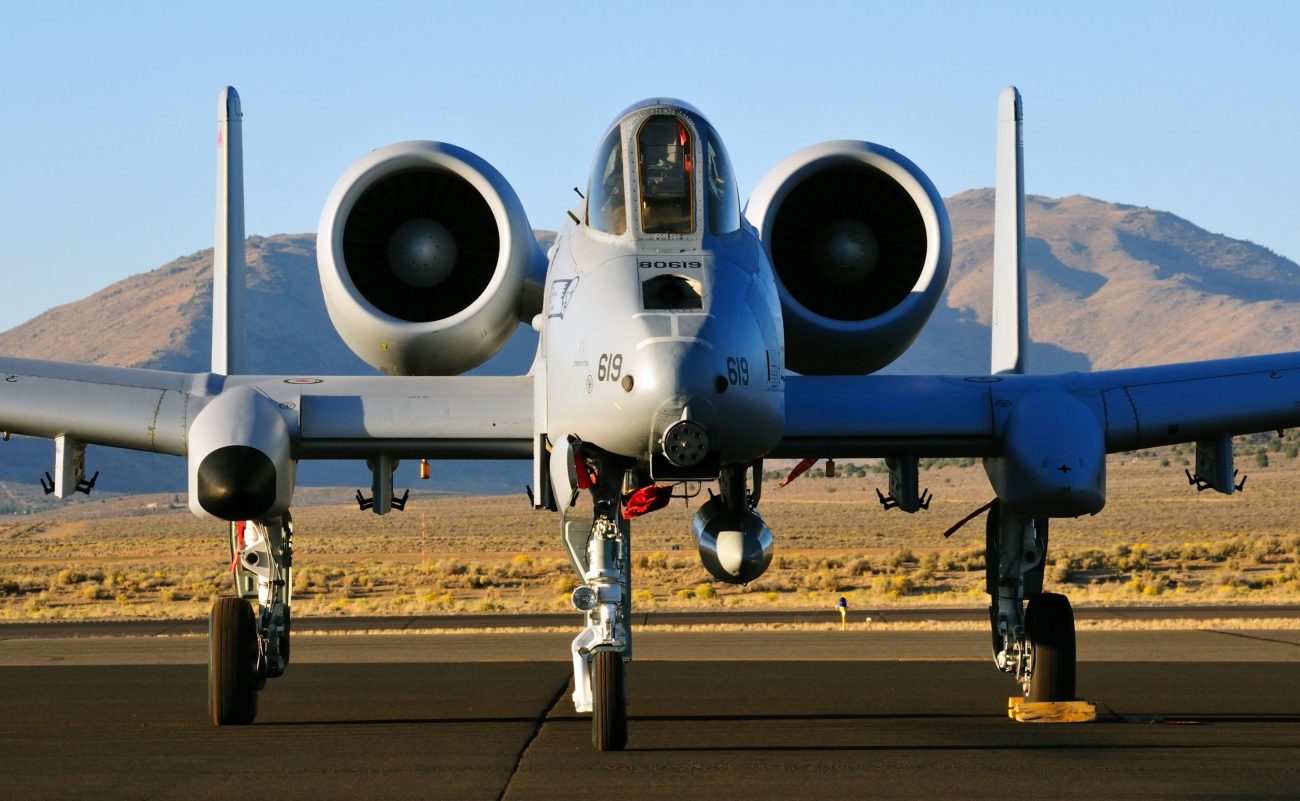The public affairs office for the Air Force’s 28th Bomb Wing recently released an exciting image of an A-10C Warthog ground attack aircraft armed with ADM-160 Miniature air-launched decoys sitting close to a B-1B bomber.
The A-10C is one of the Warthogs sent to Guam earlier last month as part of a “routine dynamic force employment operation.” The exercise aims to showcase emerging expeditionary and distributed operational concepts that could be applied in a conflict.
Integrating the ADM-160 Miniature Air-Launched Decoy, or MALD, onto the A-10C has been an essential aspect of the US military’s efforts to boost the Thunderbolt’s capabilities in a future high-end conflict.
Particularly in the Indo-Pacific region, an A-10 outfitted with MALD might play a vital role in countering China, which has stepped up its rhetoric about invading Taiwan.
The photos were accompanied by a caption that read, “These aircraft were brought to the Indo-Pacific region in conjunction with a Dynamic Force Employment operation which enables training and increases Pacific Air Forces’ ability to remain strategically predictable, but operationally unpredictable in an ever-evolving competitive and contested environment.”

A contingent of A-10Cs from Georgia’s Moody Air Force Base has been operating out of Andersen on Guam and Roman Tmetuchl International Airport in Palau, an island nation.
The deployment of Warthogs is believed to be made as a part of Exercise Iron Thunder.
Meanwhile, since October, a group of B-1Bs from the 28th Bomb Wing has also been deployed by a Bomber Task Force (BTF) to Guam.
The A-10C shown in the most recent photographs was equipped with two training AGM-65K Maverick air-to-surface missiles, four DATM-160s, two similarly inert AIM-9L/M Sidewinder heat-seeking short-range air-to-air missiles, and a LITENING targeting pod.

That being said, the service has been working to integrate the MALD onto the A-10C to enable Warthogs to survive in higher-threat settings.
The 127th Wing Public Affairs said in March 2022 that it is examining the potential of the A-10 Thunderbolt to become the next aircraft outfitted with the Miniature Air Launched Decoy MALD, also known as the ADM-160.
The MALD is a small unmanned airborne flight vehicle designed to mimic combat flight characteristics on enemy radar. The device can significantly eliminate even the enemy’s most advanced integrated air defense.
The ADM-160C MALD-J entered service in 2016 and included a modular electronic warfare capability known as CERBERUS in addition to the original Signature Augmentation Subsystem, which can replicate the radar returns of other aircraft.
CERBERUS has several interchangeable electronic warfare (EW) payloads that can be switched in and out in less than a minute, enabling customized EW attacks for various battlefield situations.
How Will It Improve The Capabilities Of The A-10?
The Air Force anticipates that a single Warthog can carry up to 16 MALDs simultaneously. The service’s other option for using ADM-160s is the F-16C/D Viper fighter jet, which can only accommodate four MALDs.
According to Major Kraig Lohse, an A-10 pilot of the 107th Fighter Squadron, the A-10’s unique agility and storage capacity make it ideal for deploying the MALD. This deployment of the MALD would be a force multiplier, allowing the Warthog to contribute significantly to future conflict.
Experts believe that the service could use a unit of A-10Cs to unleash volleys of MALDs to open paths for other aircraft in a future battle.

The Warthog was developed from the ground up to be an excellent choice for small-footprint operations from distant and hostile locations. That makes it possible for them to be quickly set up in advanced areas closer to the target region to carry out those decoy-launching missions.
In line with this, MALD and other air-launched electronic warfare systems, in particular, seem destined to play a more significant role in future battles. This is particularly true for rivals like China, which keeps developing and fielding technologically advanced air combat and air defense platforms.
Nonetheless, the role of A-10s in any future high-end conflict in the Indo-Pacific or elsewhere is still undetermined. The service has been upfront that it sees these jets obsolete for its long-term tactical aviation plans.
Congress also seems more inclined to permit the withdrawal of at least a portion of the remaining 281 Warthogs in the next fiscal year. If it happens, it could signal the start of an effort to eliminate the aircraft from service.
- Contact the author at ashishmichel@gmail.com
- Follow EurAsian Times on Google News




